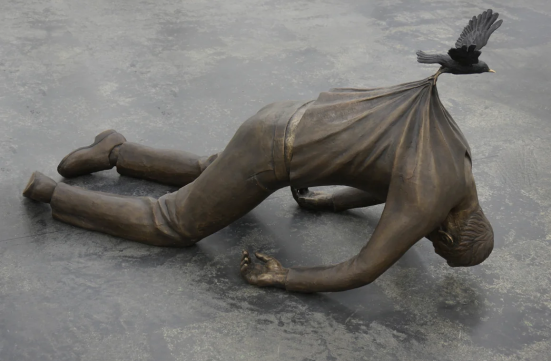How can Sense of Coherence predict resilience in the face of a collective crisis?

“Transition”: A statue by Fredrik Raddum
Posted by: Adi Mana, Yossi Mana, and Shifra Sagy
Integrating Antonovsky’s Salutogenic Approach with Bonanno’s Resilience Model
The COVID-19 pandemic has provided researchers with a unique opportunity to study how people respond to prolonged stress and potential traumatic events. A new study has integrated two influential theoretical frameworks in stress research—Antonovsky’s salutogenic approach and Bonanno’s resilience model—to better understand the mechanisms that underlie resilience during times of crisis.
Study Overview
The study tracked 526 Israeli adults over two years (March 2020 to February 2022), collecting data at seven different time points throughout the pandemic. The study specifically examined how sense of coherence (SOC) relates to different anxiety response patterns over time.
Using Latent Profile Analysis (LPA), four distinct anxiety trajectories were identified among participants:
- High Resilience – Individuals who showed a sustained absence of anxiety symptoms
- Resilience – People who maintained consistently low anxiety symptom levels throughout the pandemic
- Improving – People whose initially elevated anxiety symptoms decreased over time
- Chronic – Those who experienced consistently elevated anxiety symptoms throughout the study period
These findings partially support Bonanno’s model. The most significant finding, however, is that sense of coherence strongly differentiated between these anxiety trajectories. Participants in the “high resilience” group exhibited the strongest SOC, followed by the “resilience” and “improving” groups, while the “chronic” group displayed the weakest SOC levels.
SOC emerged as the best predictor of general anxiety levels among individuals in the ‘resilience’, ‘improving,’ and ‘chronic’ trajectories, when compared to other demographic and situational variables, such as gender, national or religious groups and the perceptions of health risk and economic risk. This provides compelling evidence that SOC serves as a critical predictor of how individuals will respond to prolonged crisis situations. During the unprecedented global crisis of COVID-19, individuals with stronger SOC were better equipped to maintain psychological well-being, adapt to changing circumstances, and find meaning amid uncertainty.
Implications for Public Health
These findings have important implications for public health policy and intervention strategies:
- Early Identification: Monitoring SOC levels could help identify at-risk populations during crises
- Targeted Interventions: Resources could be directed toward strengthening SOC in vulnerable groups
- Policy Development: Public communications during crises should advance SOC in the general population too, not only among the at-risk groups. This can be done by emphasizing clarity, comprehensibility, meaningfulness, and manageability in their public policy.
As we move forward and face new collective challenges, strengthening sense of coherence at both individual and community and national levels may be one of our most valuable strategies for advancing resilience and well-being.
Reference
This blog post is based on research of Mana, A., Mana, Y., & Sagy, S. (2025). Explaining resilience in response to potential traumatic event: Sense of coherence and trajectories of anxiety during COVID-19. Psychological Trauma: Theory, Research, Practice, and Policy. Advance online publication. https://doi.org/10.1037/tra0001883